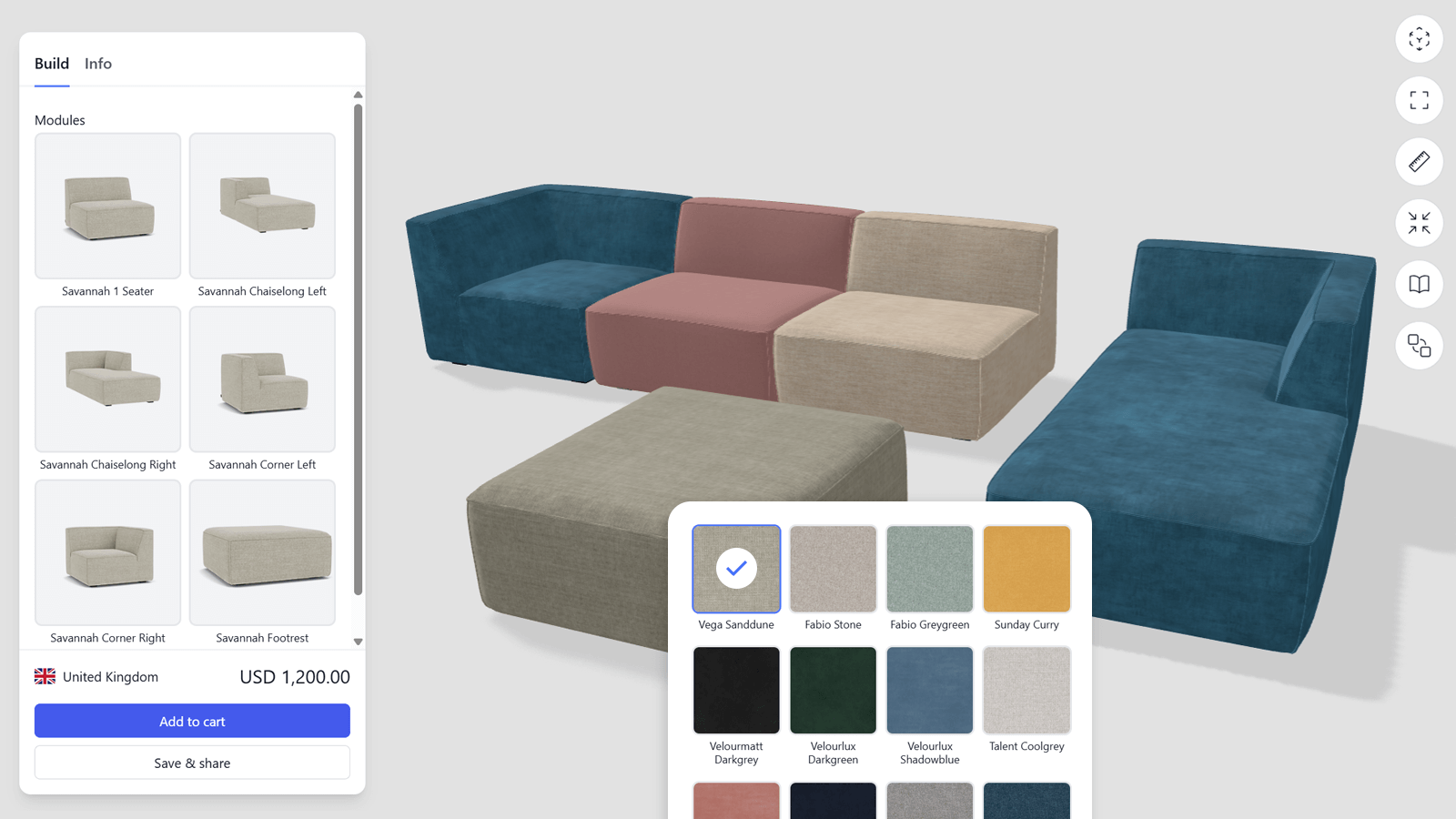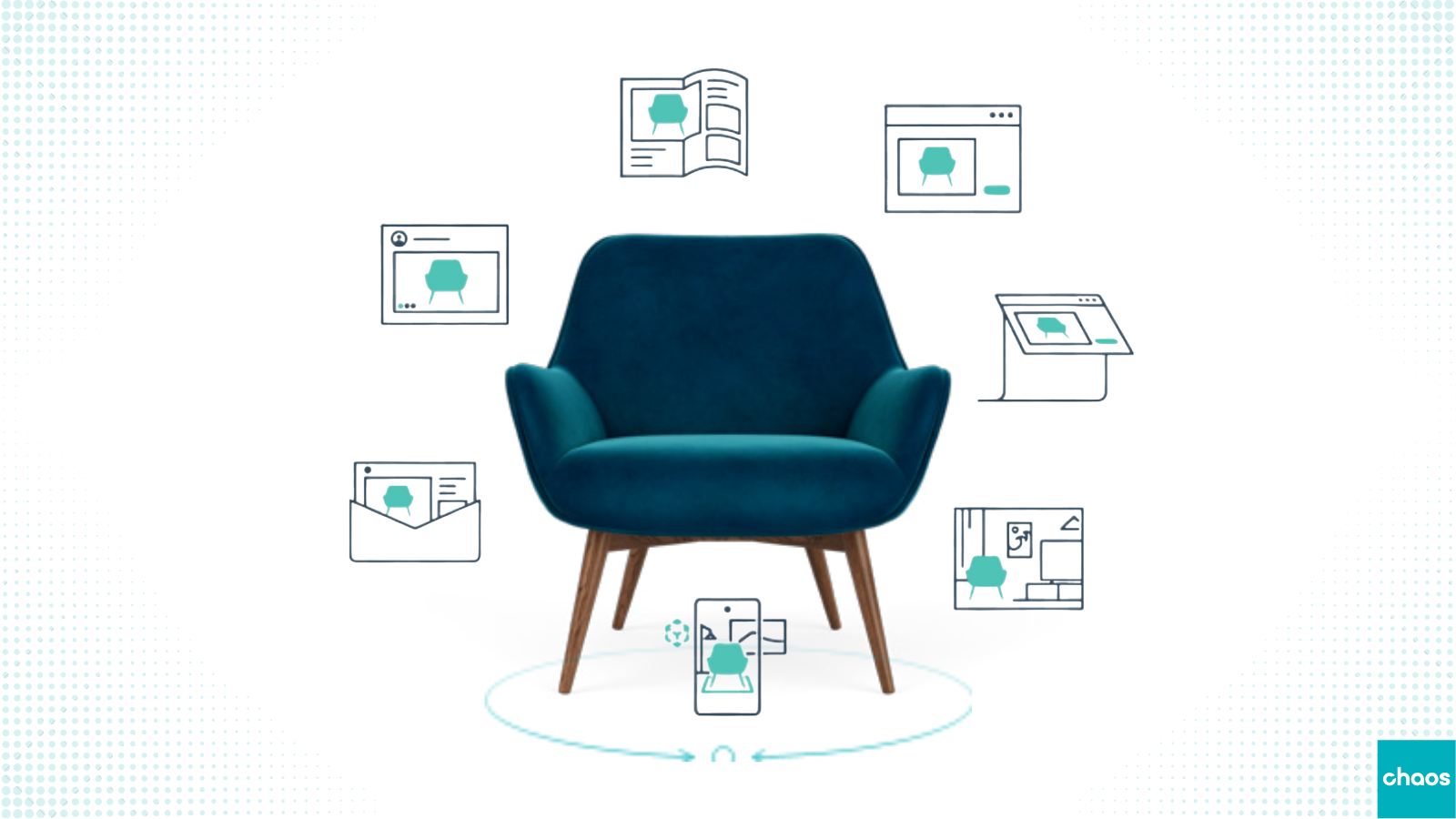Welcome to the visual economy—where product visuals are the backbone of online shopping, especially in furniture retail.
What is the visual economy? Simply put, it’s the strategic use of 3D visualization services to engage customers, capture more sales, and deliver seamless, personalized shopping experiences—both online and in-store. And if that sounds like the future of furniture retail—that’s because it is.
The Ikea story: A visual shift that changed the game
As in many aspects, IKEA was also one of the pioneers in product visualization. The flat-pack furniture giant quietly transitioned from traditional product photography to CGI back in 2006. By 2014, 75% of their product catalog was rendered instead of photographed, and most customers didn’t even notice.
Why? Because great visualization just works. It removes friction, builds trust, and helps customers connect with what they’re buying—before they ever hit “add to cart.”
Trends driving the visual economy
Let’s look at a few key trends that are accelerating the need for better visual experiences:
- We’re less patient than ever: Technology has trained us to expect instant results. A few extra clicks or a laggy experience can cost you the sale.
- Home matters more: Since 2020, our homes have become offices, gyms, classrooms, and sanctuaries. Shoppers are more emotionally invested in their spaces—and in the products they put in them.
- Customers want control: In an age of customization and personal branding, people expect to interact with, tweak, and visualize their purchases before they buy.
The power of omnichannel done right
Customers don’t think in “channels”—they think in experiences. Whether they're browsing on their phone during a commute, checking a product again on their laptop at home, or talking to a rep in-store, they expect it all to connect. One brand. One journey.
That means:
- Serving high-quality, customizable visuals
- Letting customers save and revisit their designs
- Providing a seamless experience from online to in-store and back again
When that journey breaks, so does trust—and usually, the sale.
Connecting through customization
The heart of the visual economy is connection. Allowing your customer to engage with your product—through 360 views, customization, and augmented reality—builds emotional investment. It’s no longer about browsing a product. It’s about designing their space.
The data backs this up: Retailers using 3D and interactive content are seeing significant boosts in conversion rates, average order value, and even time spent on page. According to Google, people engage with 3D images almost 50% more than static ones.
Visualization = Lower returns, higher satisfaction
Returns are costly. But more often than not, they happen because the product didn’t meet expectations—or customers couldn’t clearly visualize what they were getting.
High-quality visual assets, interactive tools, and consistent customer experiences across touchpoints dramatically reduce that risk. Customers feel more confident and are more satisfied with their purchases.
Build once, use everywhere
If there’s one key takeaway from this article it’s this: Build once. Use everywhere. Create high-quality, configurable visual assets—and then deploy them across every platform, from your product pages to your in-store displays.
Want more insights on how to thrive in today’s visual economy? Watch our webinar.



